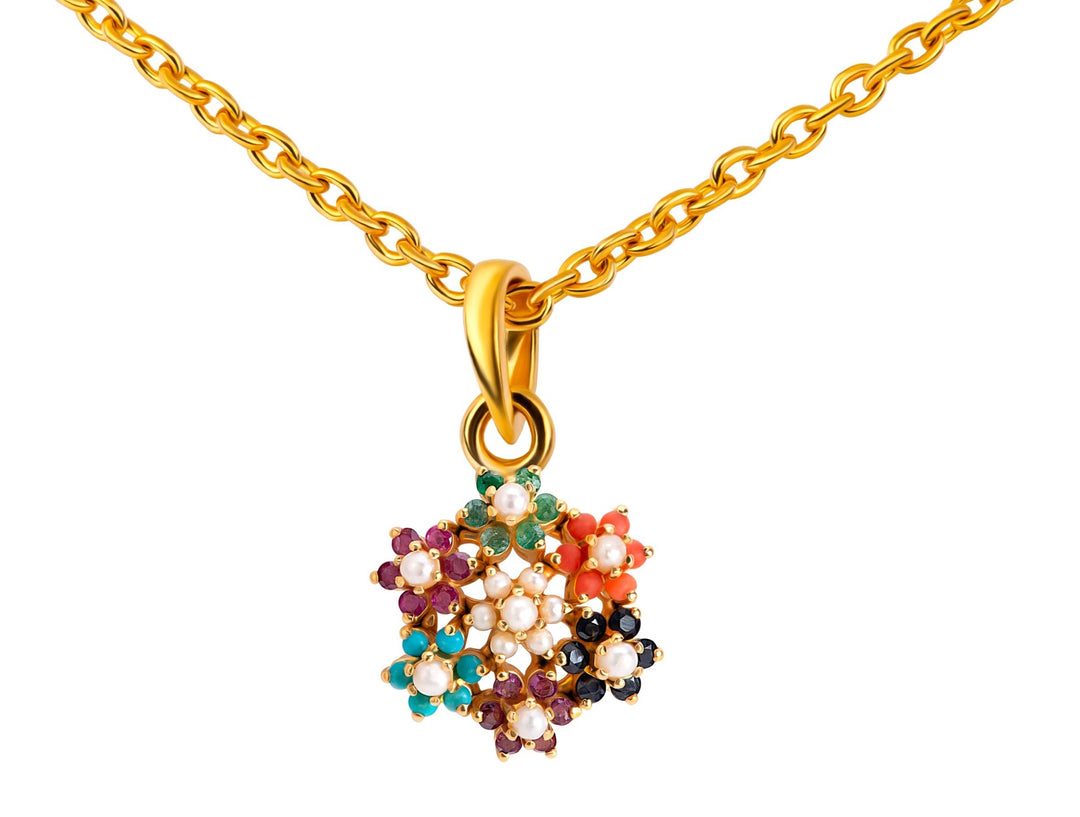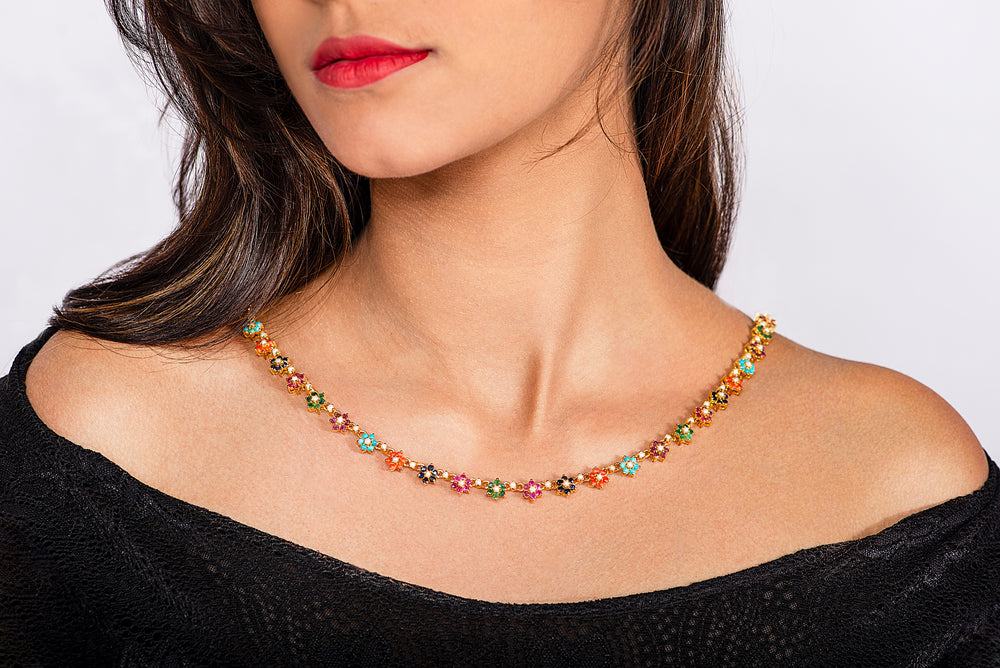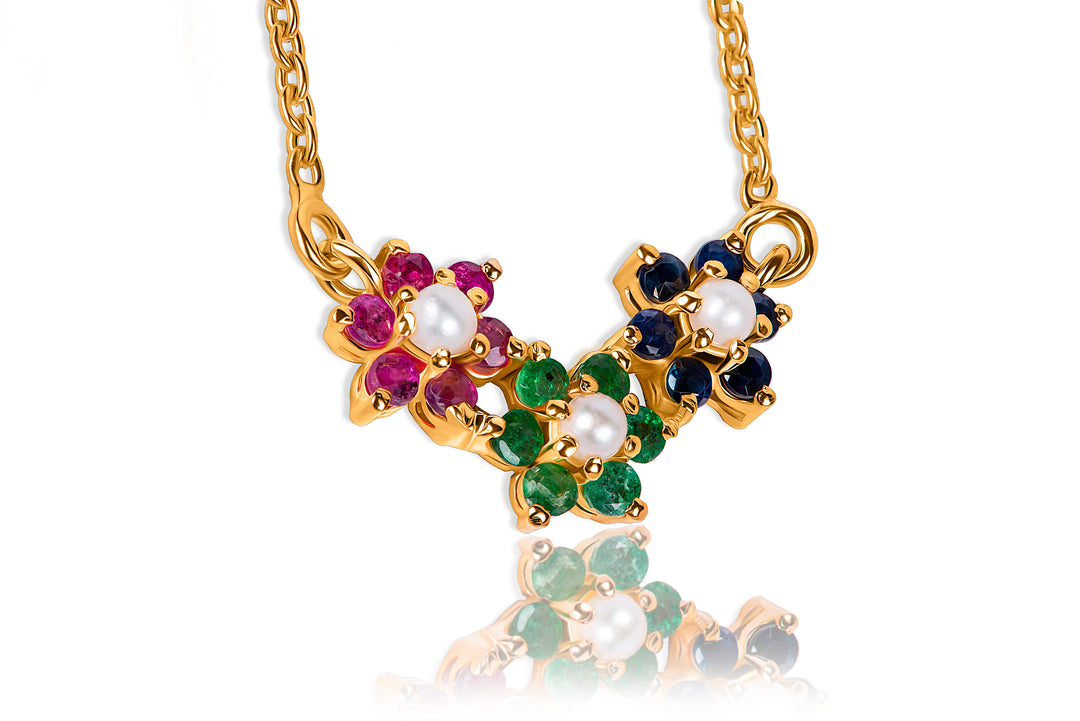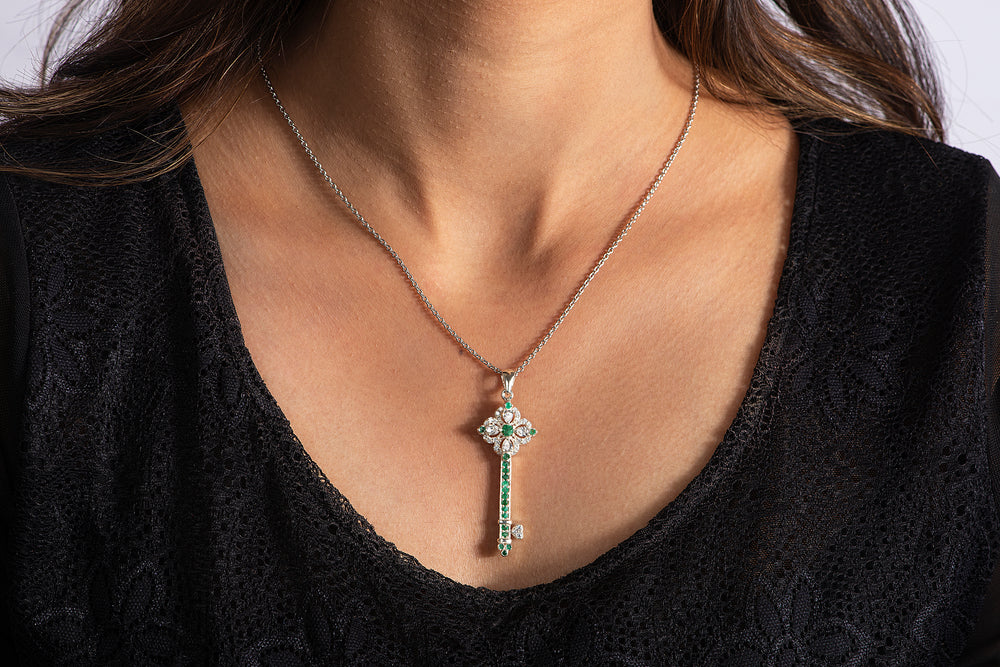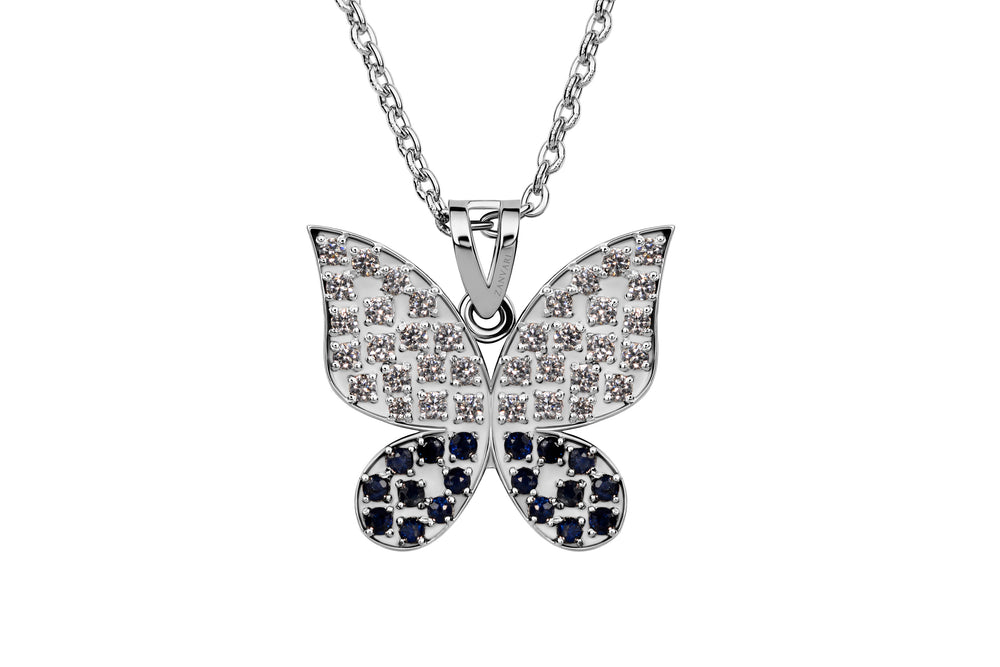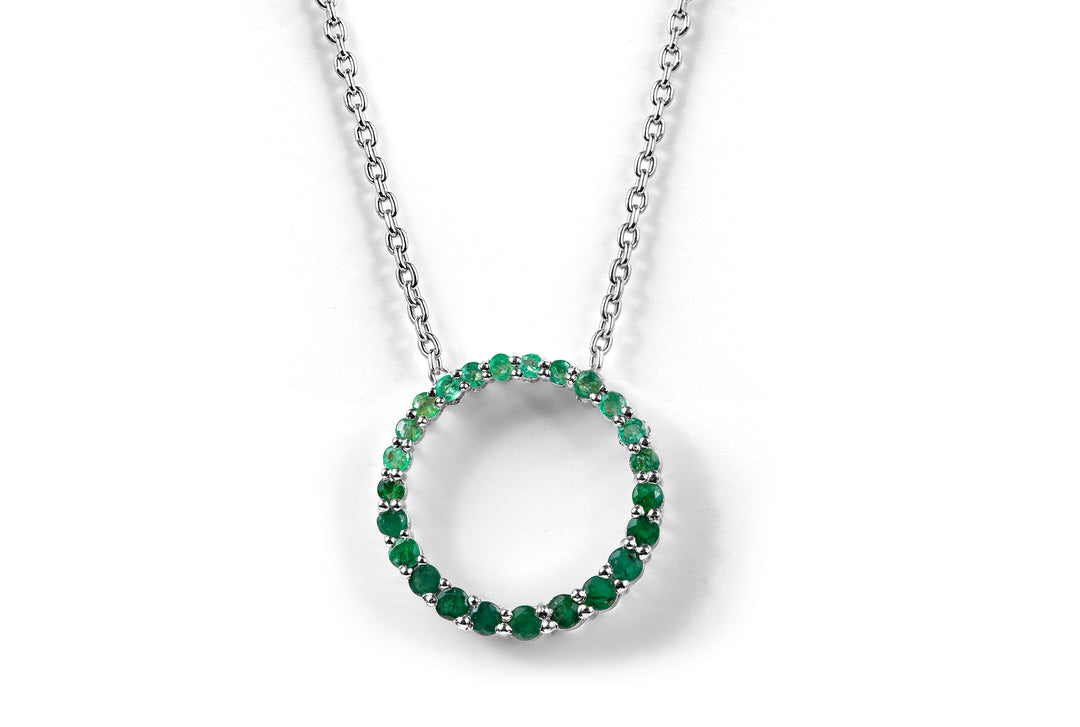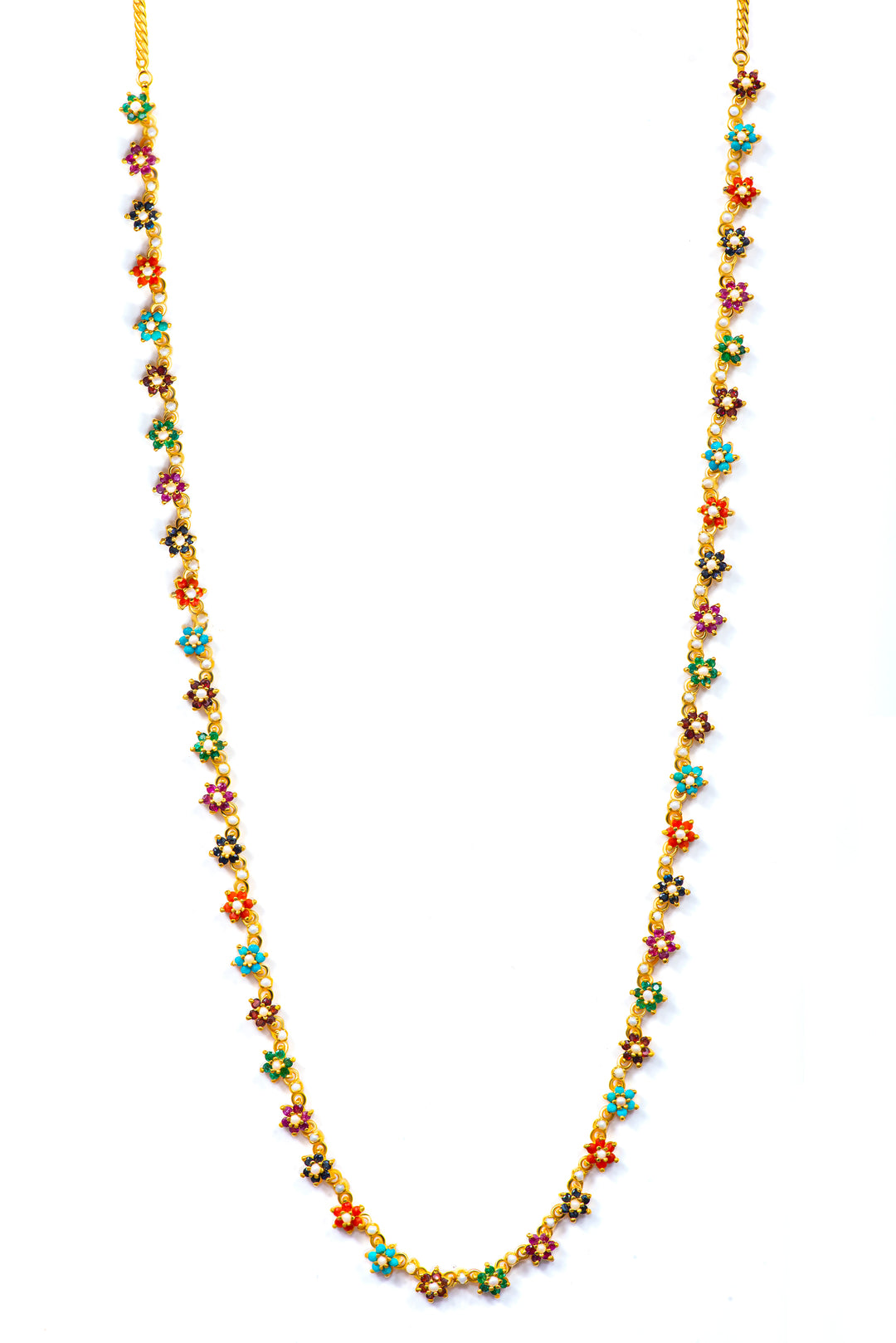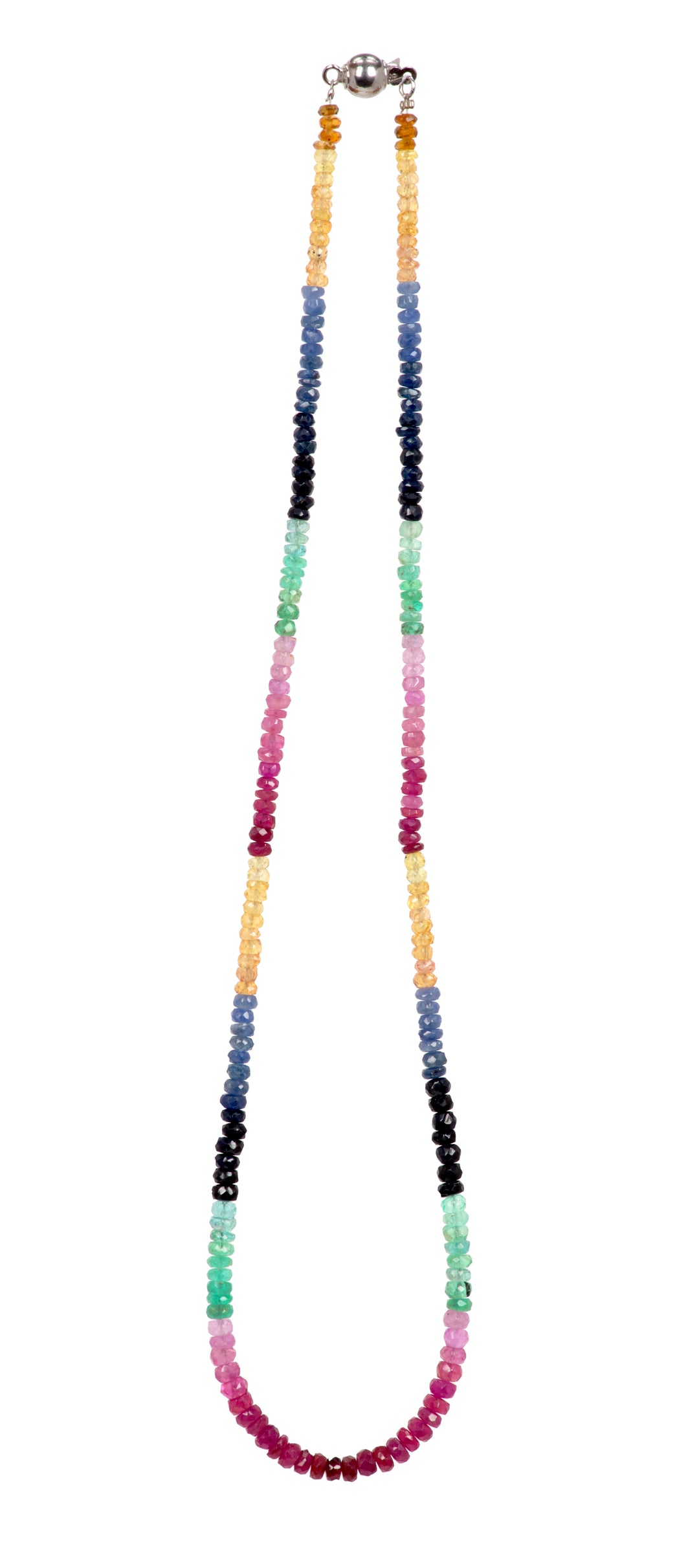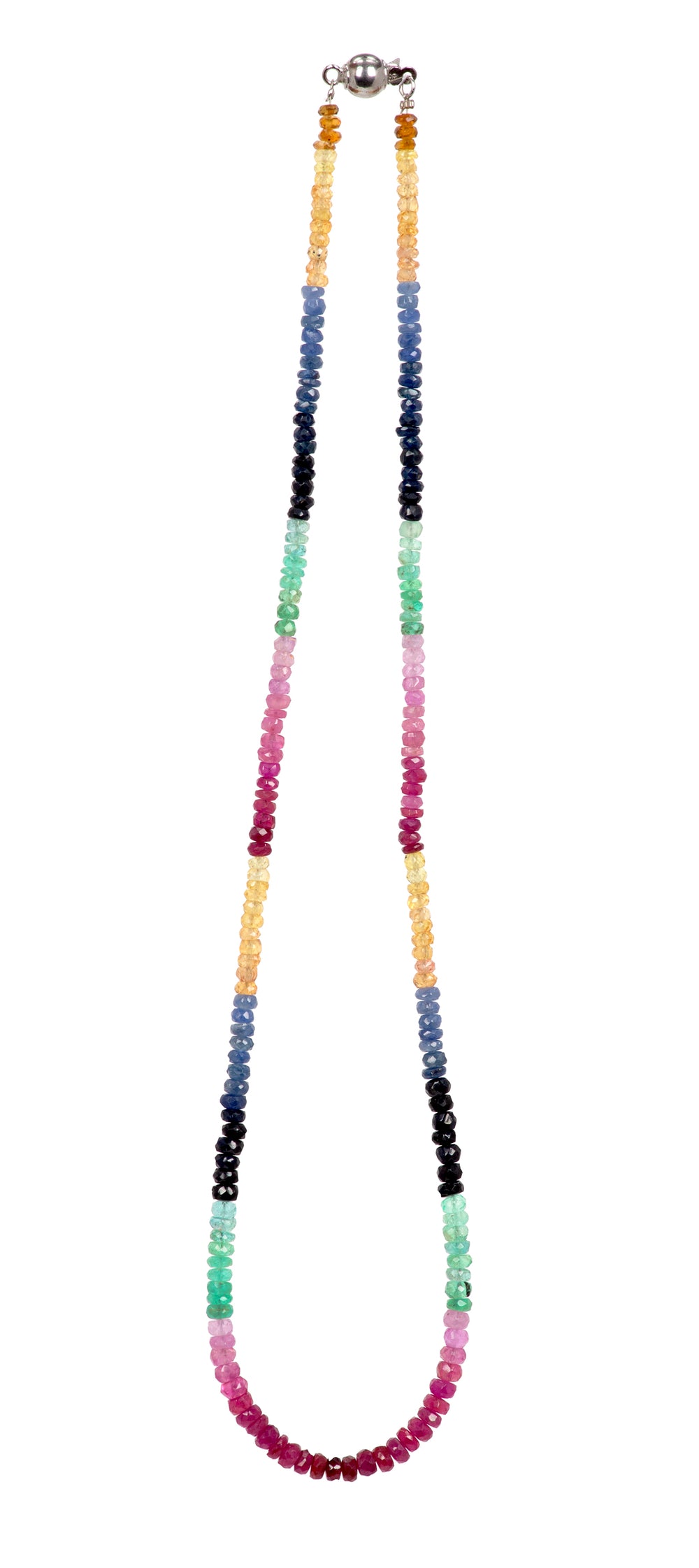RANG-E-BAHAR
Introducing the Zanvari Natural Emerald Collection, an exclusive line of necklaces that embody timeless elegance and the enchanting allure of nature. Each piece in this exquisite collection is masterfully crafted with 925 sterling silver, ensuring a base of 100% authentic silver that provides both beauty and durability. The heart of each necklace is a natural emerald, hand-selected for its vibrant green hue and mesmerizing clarity, symbolizing growth, renewal, and the flourishing beauty of nature.
Exploring the 18 Shades of Natural Emerald Green
Emeralds, with their lush, vibrant hues, have mesmerized civilizations for centuries, symbolizing rebirth, love, and wisdom.
What makes emeralds particularly captivating is their broad spectrum of green—from the palest mint to the deepest forest green.
Delve into the fascinating world of natural emerald variations, highlighting the 18 different shades of green that make every emerald distinct.
THE SPECTRUM OF GREEN
Natural emeralds owe their coloring to the presence of chromium and vanadium, and occasionally iron, which influences the intensity and hue of green. The interplay of these elements, combined with the specific geological conditions, gives rise to a stunning array of greens, making each emerald a piece of Earth's artistry.
FROM LIGHT TO DARK: THE GREEN SPECTRUM
- Mint Green: Light and refreshing, this hue resembles the delicate leaves of spring, offering a subtle introduction to the emerald family.
- Pistachio Green: A slightly warmer tone, with yellowish undertones, reminiscent of the nut's soft, earthy color.
- Grass Green: Bright and vibrant, capturing the essence of a sunny day in a lush meadow.
- Pea Green: A deeper shade with a hint of yellow, evoking the color of fresh garden peas.
- Apple Green: A lively, bright shade that's both crisp and inviting.
- Olive Green: Darker with brown undertones, this shade adds an earthy depth to the emerald palette.
- Jade Green: A soft, almost translucent hue that bridges the gap between green and blue.
- Teal Green: A more complex shade where blue and green meet, offering a hint of the ocean's depth.
- Forest Green: Deep and rich, reminiscent of the dense foliage of ancient woodlands.
- Emerald Green: The quintessential emerald shade—deep, vivid, and with a touch of blue, embodying the gemstone's essence.
- Sea Green: A lighter, more muted green with subtle blue undertones, capturing the serene quality of seafoam.
- Kelly Green: Bright and bold, this shade stands out with its pure and intense character.
- Lime Green: A punchy, vivid hue that brings a burst of energy and freshness.
- Malachite Green: Strikingly patterned, this shade incorporates darker and lighter bands, reminiscent of the mineral malachite.
- Hunter Green: A dark, almost black-green, sophisticated and powerful.
- Bottle Green: Dark and rich, with a glass-like depth, echoing the color of vintage glass bottles.
- Fern Green: A softer, more muted shade, evoking the delicate fronds of a fern.
- Moss Green: Earthy and subdued, with gray undertones, capturing the essence of a moss-covered forest floor.
INCLUSIONS/INTERNAL FACTOR
Inclusions in natural emeralds are not only common but are also considered an integral part of the gemstone's identity, offering clues about its origin and authenticity. Unlike other gemstones, where clarity is highly prized, inclusions in emeralds are often viewed with affection and are sometimes referred to as "jardin," the French word for garden, due to their appearance resembling foliage. Here's an overview of the types of inclusions commonly found in natural emeralds:
SOLID INCLUSIONS
- Mineral Crystals: Tiny crystals of other minerals can be trapped inside an emerald as it forms. Common minerals include calcite, pyrite, and quartz.
- Growth Tubes: Hollow tubes that result from uneven growth conditions during the emerald's formation, often filled with gas or liquid.
LIQUID AND GAS INCLUSIONS
- Two-Phase Inclusions: Combinations of liquid and gas bubbles trapped inside the emerald during its growth. These are particularly characteristic of emeralds and can sometimes contain tiny crystals as well.
- Three-Phase Inclusions: More complex inclusions that consist of a liquid phase, a gas bubble, and a solid crystal all within the same cavity. These are highly indicative of a natural emerald.
FISSURES AND CRACKS
- Feathers: These are fractures within the emerald that resemble the fine structure of a bird's feather. They can be filled with air, liquids, or other minerals.
- Surface-Breaking Fissures: Cracks that reach the surface of the emerald, which may be filled with oil or resin in treated stones to improve their appearance.
COLOR ZONING
- Color Zoning: Uneven distribution of color within the emerald, often in bands or patches. This occurs due to variations in the concentration of chromium and vanadium, the elements responsible for the emerald's green color.
OTHER INCLUSIONS
- Pinpoints: Very small, dot-like inclusions that can give the emerald a slightly hazy appearance.
- Needles: Long, thin inclusions that can be either solid (mineral needles) or hollow (growth tubes).
BLEMISH/EXTERNAL FACTOR
Blemishes on natural emeralds refer to external imperfections that affect the surface of the gemstone. Unlike inclusions, which are internal characteristics, blemishes are visible on the exterior and can influence the overall appearance and, to some extent, the value of the emerald. Here are some common types of blemishes found on natural emeralds:
SCRATCHES
These are fine lines or grooves on the surface, often caused by wear or contact with harder substances. Scratches can detract from the emerald's luster and brilliance if they are prominent.
CHIPS
Small pieces broken off the emerald, typically found along the edges or at the corners of faceted stones. Chips can affect the symmetry and shape of the gemstone, impacting its aesthetic appeal.
ABRASIONS
Surface wear that appears as dull spots, often found on the facets' edges where the emerald shows signs of friction or rubbing against other materials. Abrasions can reduce the sharpness and clarity of the gemstone's faceting.
PITS
Small, shallow depressions on the emerald's surface that can occur naturally or as a result of the gemstone coming into contact with hard objects or surfaces. Pits can make the surface appear uneven and less polished.
FRACTURES
Although technically considered inclusions if they extend into the interior, surface-reaching fractures can also be seen as blemishes. They appear as cracks on the emerald's surface and can compromise the structural integrity of the gemstone.
NATURAL EDGES
In some cases, natural emeralds may retain rough or unpolished areas where the original crystal structure is visible. These natural edges are not flaws but rather indications of minimal intervention in the stone's natural beauty.
Blemishes can often be minimized or removed through careful polishing and cutting, but excessive treatment can alter the stone's weight and shape. The presence of blemishes is a reminder of the natural emerald's journey from the earth to the jeweler's showcase. While a perfectly flawless natural emerald is exceedingly rare, minor surface blemishes do not significantly detract from the gemstone's inherent beauty and value, especially when the emerald displays a rich color and good transparency.








